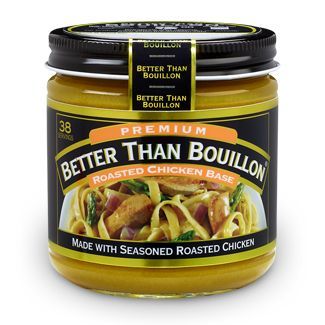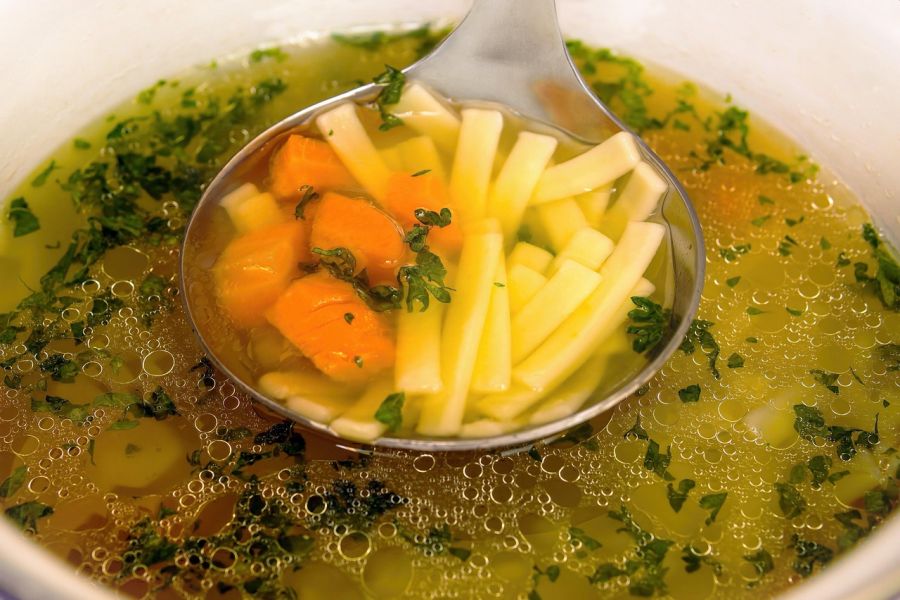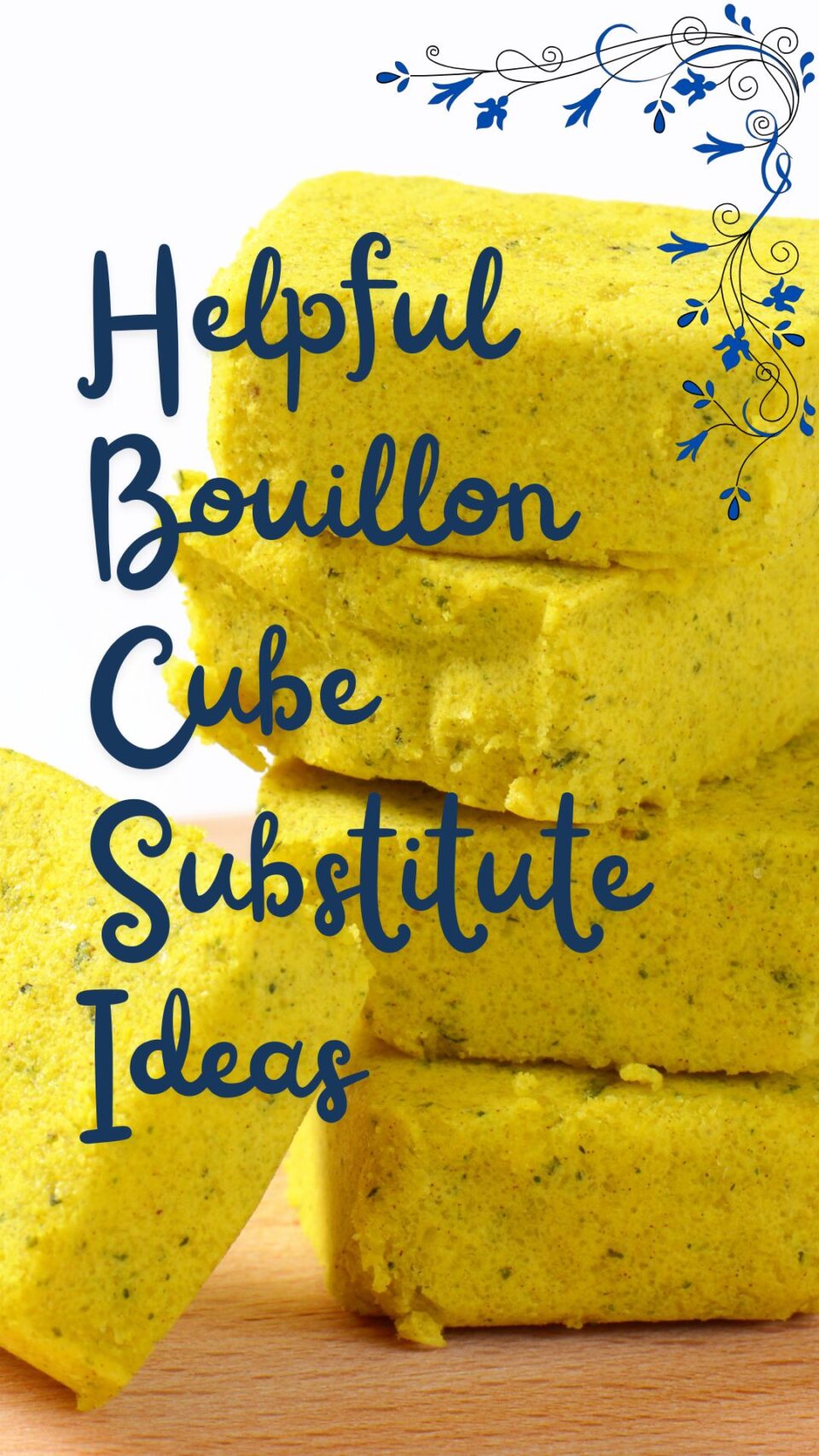When picking a bouillon cube substitute, one would generally prefer something with the same versatility, convenience, and perhaps with similar ways to control and customize the recipe. Luckily, there are several cooking ingredients that can fill that role.
Interestingly, there are some additional ideas that might require you to put in some good ole’ elbow grease, but can be very satisfying as a cooking option.
And let’s face it, while bouillon cubes are a remarkable food ingredient, they’re not exactly irreplaceable. If you know your way around the kitchen, there are plenty of ingredients that can fulfill similar roles. These ingredients can be commercial products or those that you can whip up at home.
Conventionally, the best substitutes for Bouillon Cube are Better than Bouillon, homemade stock (beef, chicken, vegetable, mushroom), homemade broth, commercial stock concentrate, and bouillon powder.
It’s also possible to work with some alternatives if you so desire – usually something not based on stock at all. This includes options like using plain water with MSG, using dry white wine, miso paste, and tomato paste. We’ll discuss these in some detail as well.
Let’s get down to the specifics.
Table of Contents
Top Substitutes For Bouillon Cubes And Ideas For Alternatives
1. Better Than Bouillon

Better Than Bouillon is a commercial product that aims to be, well, better than bouillon. How much it succeeds in that goal is up for debate and personal preferences.
However, what we can say is Better than Bouillon works quite well as a bouillon cube substitute. It helps that this product is available in a whole lot of options and flavors, which is good enough to accommodate most taste and diet preferences.
That way, you can buy conventional options like beef and chicken, or pick something suitable for a vegan or vegetarian diet. There are several flavors available, so there are multiple options even within specific diet preparations.
Rather than being sold as cubes as is the case with bouillon, these are in paste form and sold in bottles.
Typically, one bouillon cube can be substituted by one teaspoon of Better than Bouillon. And since BTB is in paste form, any necessary customization is easy to achieve.
2. Stock (Chicken, Beef, Vegetable, Mushroom, etc.)
In many ways, bouillon cubes are a more convenient alternative to stock. Thus, it stands to reason that stock can be an amazing bouillon cube substitute.
You can make your choice of stock at home, or buy the one you prefer on the market. Another advantage of using stock is that the result is very similar to bouillon cubes in taste and texture.
Additionally, you can use stock that is more in line with your taste or diet preferences. While beef stock and chicken stock are the most common options, you can as easily work with vegetable stock, mushroom stock, or any other type you prefer.
In a general sense, it is possible to use the types of stock interchangeably in a recipe. As such, chicken stock can be realistically replaced with vegetable stock without having a huge impact on the recipe. There will certainly be a change in flavors, but it’s not quite in a way that disrupts the recipe.
When substituting chicken stock in place of bouillon cubes, using one cup of stock for a cube is often a good idea. However, that can change, depending on the type of stock and your taste preferences.
3. Broth (Chicken, Beef, Vegetable, etc.)

In many cases, the terms broth and stock are often used interchangeably but there is technically a difference between the two. Stock is usually thicker and meatier of the two. Additionally, while stock is a base ingredient often added while cooking, broth can be consumed directly on its own or used as an ingredient in cooking.
For our current discussion, it suffices to say that broth can be a substitute for bouillon cubes. You may, however, have to add more broth as compared to stock. Alternatively, you can reduce the broth a bit to concentrate flavors and use it in a similar way as stock.
4. Commercial Stock Concentrate
In many cases, commercial stock concentrate is used much like bouillon cubes. You add water to the stock concentrate and get the desired quantity of stock necessary. Chicken stock concentrate is a very popular product, though several similar stock concentrates are available as well. The popular ones are beef concentrate stock/base and vegetable concentrate stock/base.
As such, the stock concentrate can be an excellent bouillon cube substitute. The substitution process is simple as well, since you can plainly follow the recipe. For example, if your recipe utilizes two cups of water used with the bouillon cube, you can simply switch it for two cups of water with the stock concentrate.
Commercial stock concentrate bottles have directions on how much to use for each cup of water. That way, an equivalent substitution becomes much simpler.
Many people actually prefer the use of stock concentrate over bouillon cubes, so you’re likely in good company with this substitution option.
5. Bouillon Powder/Granules
Another commercial product that comes in handy as a bouillon cube substitute, is bouillon powder or bouillon granules. These powder products are pretty much the same as bouillon cubes, with the difference being the granulation.
However, the granulation also offers a benefit, where it is possible to control the exact amount of bouillon powder you add to a recipe.
Substituting bouillon powder for cubes can be done by weight or by volume. The volume method is usually simpler, where you use the powder to create an equal amount of stock and add it to the recipe. When going by weight, it is possible to use the same weight of bouillon powder as the cube and add it to the recipe.
6. Alternative Ingredients (Soy Sauce, Dry White Wine, Miso Paste, etc.)
So far, the substitutes we have discussed recreate the stock, much like bouillon cubes. However, there are other alternatives to use in case you’d like a different route.
These don’t recreate stock as we know it, thus there are some variations in flavor and texture. Yet, these are viable options and alternatives to consider as bouillon cube substitutes.
- Dry White Wine: In a pinch, dry white wine can be a workable substitute for bouillon cubes. The general substitution ratio is that one bouillon cube equals half-cup dry white wine.
While workable, this route can also be difficult to implement. With this substitution, you’ll have to adjust for the water, salt, and spice content of the recipe and give the wine enough time to cook so as to allow the alcohol content to vaporize.
Yet, in the end you’ll see a less salty, lighter version of the food, with a somewhat different flavor. - Miso Paste: This is a famous Japanese condiment and brings a ton of flavor and umami goodness to food, much like bouillon cubes. In this sense, it can work as a workable bouillon cube substitute, especially if you find yourself in a tight spot with the recipe.
Generally speaking, it’s a good idea to combine miso paste with some soy sauce and water to ensure deeper flavors, similar consistency, and more balanced flavors.
Yet, for many recipes, this will bring a change of flavors, which even if subtle, can be very noticeable in some instances. Essentially, you’re bringing in ingredients from Japanese cuisine, which will affect the overall flavor and cuisine style of the recipe.
The effects of this cuisine fusion can depend on how well it’s executed and your own palate. Many might find it more than welcome, while others may not be so enthusiastic. - Water and Spices: If you have no other options, get a hold of some water, ground herbs and spices, and salt. Mix the combination well, or you could even choose to reduce the mixture a bit so the flavor of herbs and spices gets more concentrated in the water. This can work as a rather loose replacement for bouillon cubes.
If you want to go a step further, skip the salt in the mix and be generous with MSG instead. A whole lot of the savoriness (rather, umami feel) of the bouillon cubes is their use of MSG and similar ingredients that are high on the umami scale.
This method won’t quite work as a true bouillon cube substitute, but hey, something’s better than random substitutes. Plus, it’s still got a dose of that umami flavoring!
A Quick Note To Remember When Substituting For Bouillon Cubes
This section is intended to be about general information or something “you should know” when working with using or substituting bouillon cubes or similar commercial products.
Many people prefer to go the way of using homemade stock or broth, but then often find that it doesn’t quite size up as well as the commercial counterparts like bouillon cubes.
A big part of that reasoning is the savory, or better yet, umami flavoring that’s concentrated into bouillon cubes and similar commercial products.
These cubes usually contain a significant amount of MSG and might also have other ingredients to concentrate the umami aspect. Home-cooked stock generally doesn’t rely on similar ingredients, and thus might lack the umami feel that’s often associated with commercial products.
Getting A Suitable Bouillon Cube Substitute
As we can infer from this discussion, the best bouillon cube substitute is usually another commercial product that handles a similar role in cooking. This product can be available in several forms and brands, including bouillon granules, bouillon powder, stock concentrate, Better Than Bouillon, and others.
However, if you prefer taking the homemade route, then broth and stock (beef, chicken, vegetable, etc.) are the way to go, depending on your choice of flavors.
We’ve also included some non-conventional substitutes that don’t take the same approach as stock-based ingredients like bouillon. These options, like miso paste, soy sauce, and dry white wine can be rather handy if you choose to chart an entirely different path when dealing with your recipe.

